A husband has been refused permission to build a parking space for his disabled wife outside their village home – over fears it would ‘harm the character’ of the heritage site where they live.
John Flattery applied for planning permission to build a 2.5 metre (8 foot) driveway in the historic UNESCO World Heritage Site in Ironbridge, Shropshire, where they live.
The married couple’s mid-terraced period cottage sits within the famous Ironbridge Gorge, where there are strict planning rules against developments of all kinds.
John had hoped that the council would approve the new parking area to allow his disabled wife safe access to the property.
But he is now embroiled in a planning row with his local council after the plans were refused.
Telford & Wrekin Council said the parking space would cause ‘harm to the Outstanding Universal Value of the Ironbridge Gorge World Heritage Site and Severn Gorge Conservation Area.’
They accepted the ‘improved access would be beneficial to the applicant’ as on-street parking is limited on Woodside, in Coalbrookdale.
But they concluded that the plans would ‘disrupt the visual rhythm, cohesion, uniformity and character’ of the picturesque village.
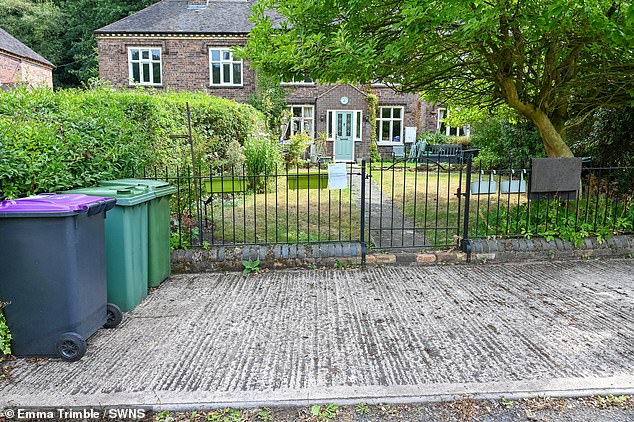
A husband has been refused permission to build a parking space for his disabled wife outside their village home – over fears it would ‘harm the character’ of the heritage site where they live

Ironbridge was the birthplace of ironworks after Abraham Darby I first smelted iron ore using coke instead of charcoal in 1709
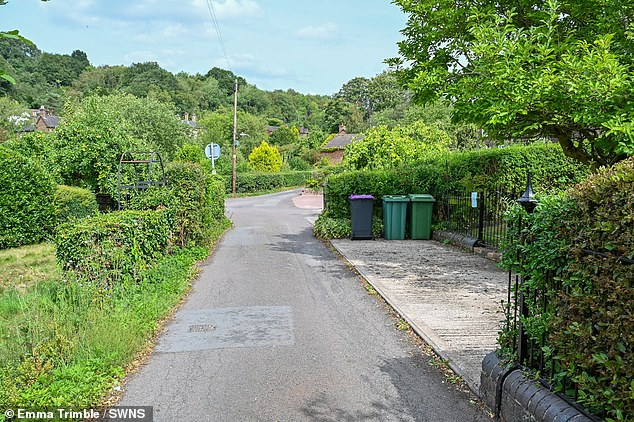
The married couple’s mid-terraced period cottage sits within the famous Ironbridge Gorge, where there are strict planning rules against developments of all kinds
Some residents have branded the decision ‘harsh’ and said it was depriving a disabled woman of the dignity of being able to access her own home.
One neighbour said: ‘We know there are very strict rules here and for a good reason. But this man only wants to build a small driveway for his wife.
‘It is depriving her dignity of being able to get to her own home and I can’t see how a flat bit of driveway would harm the landscape here.
‘I think it’s rather harsh in this instance as he’s hardly building a two-storey eyesore extension. I do hope they reconsider.’
Another resident, however, disagreed, saying: ‘The guy who bought the house spends most of his time in Ireland and I think he is a property developer.
‘There is access up there and space for cars already so I don’t think it is entirely necessary.
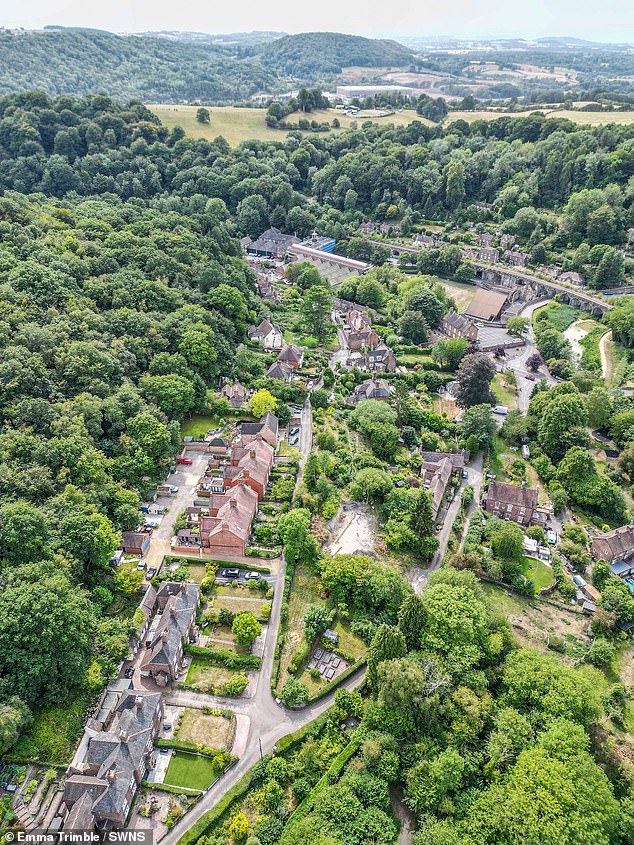
Telford & Wrekin Council said the parking space would cause ‘harm to the Outstanding Universal Value of the Ironbridge Gorge World Heritage Site and Severn Gorge Conservation Area’

John Flattery applied for planning permission to build a 2.5 metre (8 foot) driveway in the historic UNESCO World Heritage Site in Ironbridge, Shropshire, where they live
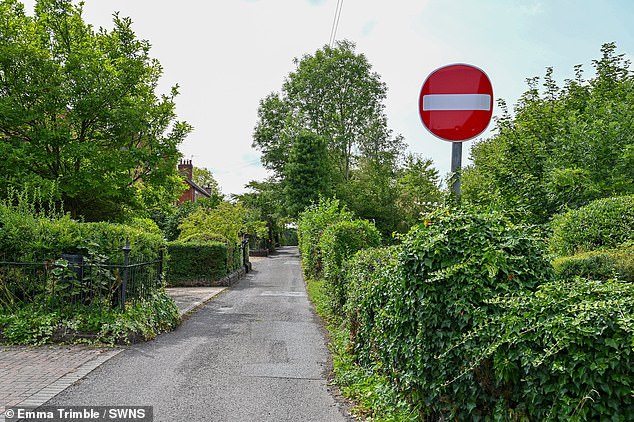
The local council concluded that the plans would ‘disrupt the visual rhythm, cohesion, uniformity and character’ of the picturesque village
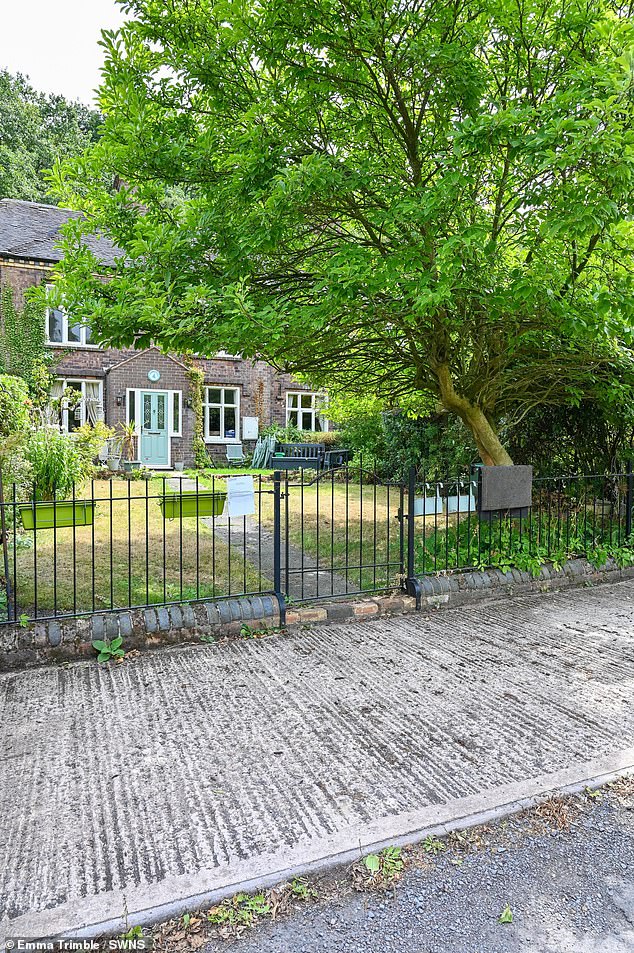
Some residents have branded the decision ‘harsh’ and said it was depriving a disabled woman of the dignity of being able to access her own home
‘This area is well protected and preserved, we’re proud of that and it should stay that way.’
John Flattery had wanted to create a 2.5 metre-wide driveway with a paved 900 millimetre-wide pedestrian path either side for disabled access.
He also wanted to relay the existing paved area accessing the front of the dwelling.
Planning agent Kevin Twigger, of KRT Associates Ltd, had told planners that the proposal would remove ‘approximately 40 per cent of the grassed area’.
He argued the materials were ‘in keeping with the visual appearance of the surrounding cottages’ and the selection of grasscrete (made from natural grass combined with reinforced concrete) for the driveway provided a ‘durable, well-drained, aesthetically-pleasing option than traditional asphalt or concrete driveways’.
He added: ‘It is intended that the existing railings will be reused and converted to a horizontal sliding gate serving the driveway and left-side pedestrian path, maintaining both security and aesthetic appearance.
‘The existing pedestrian gate will be relocated to serve the right-side pedestrian path.
‘The proposed changes are necessary to assist the applicant’s disabled wife to access the dwelling safely.
‘Woodside is a narrow, one-way lane with no opportunity for safe accessible on-street car parking for disabled individuals.
‘The carefully designed proposals ensure that the visual and environment impacts are minimised whilst providing necessary adaptions to meet the disabled occupants’ needs to enhance their ability to live independently in their home.’
But planners disagreed. They said: ‘It is considered that the proposal would create the partial loss of green amenity space and the subdivision of the historic frontage, disrupting the visual rhythm, cohesion, uniformity and character of the row of terrace and would be harmful to the character and setting of the building of local interest.
‘Whilst it is acknowledged that the improved access would be beneficial to the applicant, this is not outweighed by the harm to the Outstanding Universal Value (OUV) of the lronbridge Gorge World Heritage Site and Severn Gorge Conservation Area.’
John and his wife were told that they could appeal to the Planning Inspectorate.
Ironbridge was the birthplace of ironworks after Abraham Darby I first smelted iron ore using coke instead of charcoal in 1709.
The process, which was far more efficient than traditional methods, triggered a mass production of cast iron.
In 1779 his grandson, Abraham Darby III, build the world’s first Iron Bridge near to the site, connecting Coalbrookdale to the industrial town of Broseley.
The area continued to thrive throughout the 19th century and into the 20th until the industry went into decline as it competed with new technologies and production methods.
The site is classed as a UNESCO World Heritage Site and still attracts thousands of visitors each year as the ‘birthplace of the Industrial Revolution’.












